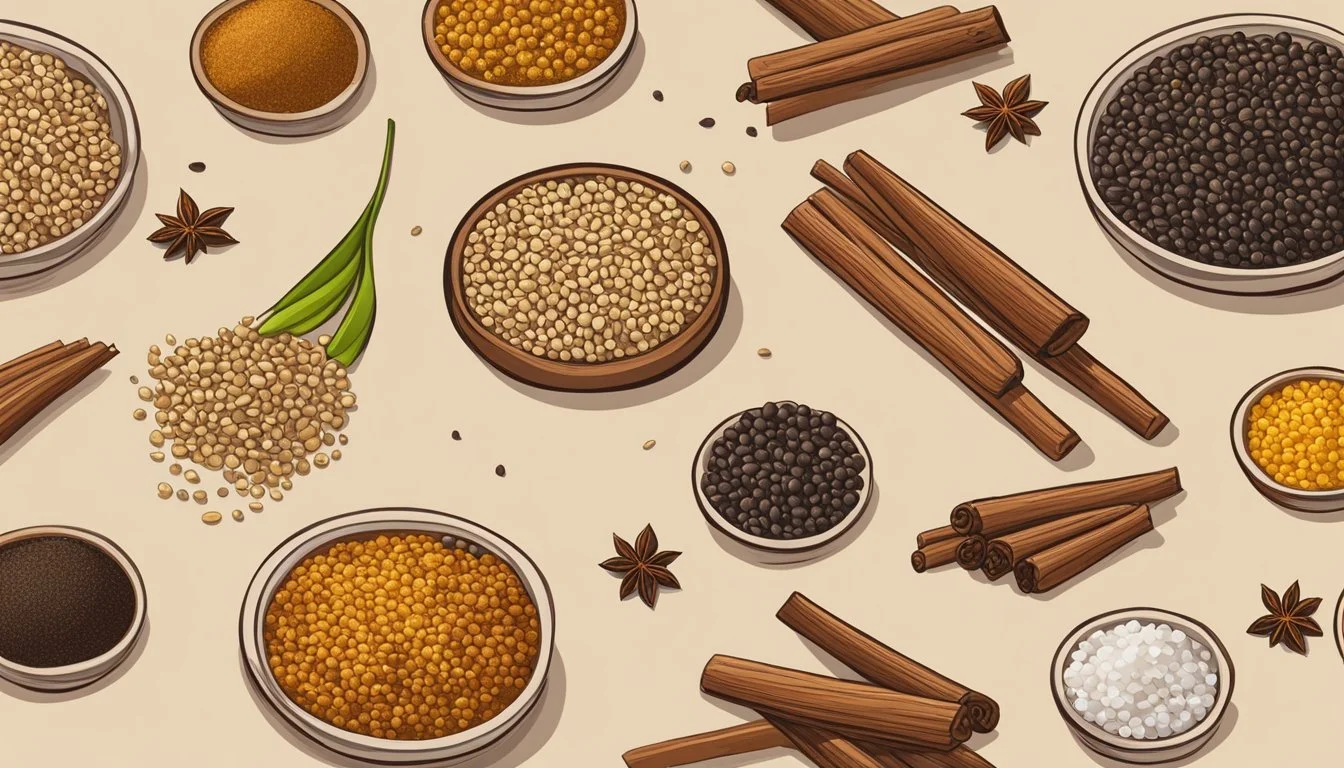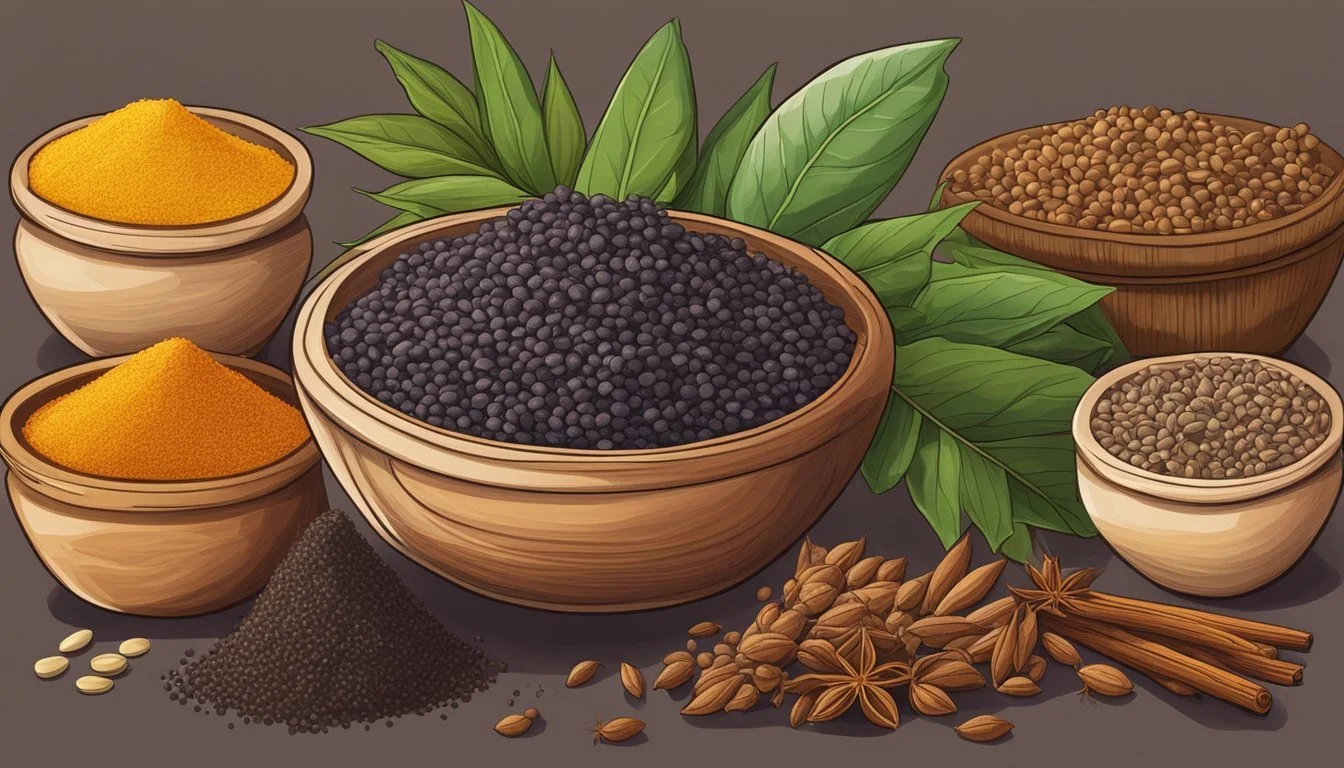Does Grains of Paradise Go Bad?
Shelf Life and Storage Tips
Curious about whether grains of paradise, the exotic spice from West Africa, can go bad? Like many spices, grains of paradise possess a relatively long shelf life, but they do eventually lose potency. While they don't necessarily spoil or become unsafe to eat, their distinctive flavor can diminish over time.
As a member of the ginger family, grains of paradise typically maintain their quality for up to a year when stored in a cool, dark, and dry place. This aromatic spice, also known as melegueta pepper, should be kept in an airtight container to preserve its unique peppery zest. For those who enjoy robust flavors, using freshly ground grains of paradise can make a significant difference in dishes.
Grains of paradise are appreciated for their versatility in cooking, adding warmth and complexity to various recipes from soups to baked goods. To get the most flavorful experience, considering the storage conditions and the spice’s age is essential. Ensuring the spice is fresh will result in the best culinary outcomes.
Grains of Paradise Overview
Grains of Paradise, also known as Aframomum melegueta or melegueta pepper, is a versatile spice belonging to the Zingiberaceae family, the same family as ginger. Renowned for its unique flavor profile, it is often utilized in both culinary applications and traditional medicine.
Botanical Profile
Grains of Paradise is derived from the seeds of the Aframomum melegueta plant, a member of the ginger family. The seeds are reddish-brown, about ⅛-inch in diameter, and have a peppery taste with hints of citrus and cardamom.
This plant is native to West Africa and thrives in tropical climates. The Grains of Paradise seed pods are harvested and then dried for use in various applications. Similar to ginger, the plant is known for its medicinal and culinary value.
Culinary Uses
In cooking, Grains of Paradise is used for its sharp, spicy flavor with a hint of citrus, making it a popular choice in spice blends. Chefs often grind the seeds to add a unique taste to meat rubs, marinades, and seasoning blends.
Common Culinary Applications:
Spice blends with black pepper, coriander, and cumin
Seasoning for meat and poultry
Flavoring soups and stews
Adding to baked goods for a spicy twist
This spice enhances the flavors in both sweet and savory dishes, making it a versatile ingredient in modern and traditional recipes.
Historical Significance
Historically, Grains of Paradise has been valued for both its culinary and medicinal properties. It has been used in West and North African cuisines for centuries, adding a distinctive flavor to regional dishes.
In medieval Europe, the spice was often used as a substitute for black pepper, which was highly expensive at the time. It was also believed to have various health benefits, such as aiding digestion and improving overall wellness.
Throughout history, Grains of Paradise has maintained its reputation as a valuable spice, appreciated for its robust flavor and potential medicinal benefits. Its historical significance remains evident in its continued use in modern culinary practices.
Health Benefits and Nutrition
Grains of paradise offer numerous health benefits and a rich nutritional profile, making them a valuable addition to any diet. They provide essential nutrients and have been traditionally used in medicine for various health conditions.
Nutritional Composition
Grains of paradise are rich in micronutrients and phytochemicals. Iron is a vital component, essential for oxygen transport and energy production.
They also contain vitamin E, an antioxidant that protects cells from damage. Additionally, they offer a modest amount of protein, which is crucial for muscle repair and growth.
The seeds include beneficial dietary fibers that aid in digestion and regulate blood sugar levels. Phytochemicals in these seeds contribute to their health-promoting properties, enhancing their overall nutritional value.
Medicinal Properties
Grains of paradise exhibit various medicinal benefits, backed by scientific evidence. They have strong anti-inflammatory properties, potentially aiding in reducing inflammation-related disorders.
Their pain relief capacity makes them useful in managing chronic pain and arthritis. Studies suggest they may help in weight management by improving metabolic rate and reducing fat accumulation, thus aiding in the fight against obesity.
Antioxidants present in these grains help combat oxidative stress, lowering the risk of heart disease and cancer. Research also indicates potential benefits for those with diabetes, as they may help control blood sugar levels.
Potential Side Effects
Despite their benefits, grains of paradise must be consumed with caution. High doses may cause stomach upset, nausea, and vomiting. There could be interactions with certain medications, like blood thinners and antidepressants.
Pregnant women should avoid large amounts due to insufficient safety data.
Moderation is key to avoiding metabolic disorders linked to overconsumption. Proper dosing and consultation with a healthcare provider ensure safe use, minimizing potential side effects while maximizing health benefits.
Proper Storage Techniques
Ensuring that Grains of Paradise remain fresh involves controlling environmental factors and using appropriate containers. Proper storage techniques help prolong their shelf life and maintain their flavor and aroma.
Environmental Factors
Grains of Paradise should be stored in a cool, dry, and dark environment to prevent spoilage. These conditions minimize exposure to light, heat, and humidity, which can degrade the quality of the grains.
Temperature control is crucial; excessive warmth can lead to accelerated spoilage. Keeping the grains in stable, room-temperature settings, away from heat sources, is advisable.
Moisture is another significant factor. High humidity levels can cause condensation within the storage container, leading to mold growth. Ensuring a dry environment is paramount. Avoid placing the container near sinks or other water sources to minimize humidity exposure.
Container Recommendations
For optimal storage, use airtight containers to prevent air and moisture from reaching the grains. Airtight containers, such as glass jars with sealed lids or vacuum-sealed bags, can extend the longevity of Grains of Paradise by maintaining their freshness.
Opaque containers are beneficial as they block light, which can degrade the grains' quality. Labeling containers with the purchase date can help track the shelf life and ensure timely use.
Mylar bags with oxygen absorbers are an excellent option for long-term storage. These bags offer a durable barrier against light, air, and moisture, preserving the grains’ integrity for extended periods.
Identifying Freshness and Quality
The freshness and quality of Grains of Paradise are characterized by specific physical traits and observable signs. Detailed scrutiny of their appearance, texture, and aroma can help ensure that they are still in good condition.
Physical Characteristics
Fresh Grains of Paradise should exhibit a light reddish-brown hue. They are small seeds, about ⅛-inch in diameter, resembling peppercorns but with a more fragrant aroma.
The texture should be firm and not soft or shriveled. When ground, the grains release a pungent, peppery scent with hints of cardamom and ginger.
Weight can also be an indicator. Fresh grains should feel dense for their size. If they feel unusually light, they may have lost moisture and flavor.
Signs of Degradation
Common signs of spoilage include changes in color, texture, and odor. A dull or faded color suggests that the grains are no longer fresh. A musty or off-putting smell indicates they've gone bad.
Texture changes such as becoming soft, mushy, or overly dry are red flags. If the grains no longer release their characteristic aroma when ground, it's a sign of degradation.
Proper storage is crucial. Use an airtight container and store it at a consistent, cool temperature away from direct sunlight to maximize shelf life and maintain their germ integrity.
Culinary Applications
Grains of Paradise can elevate various dishes by adding a unique and complex flavor. Their uses span from traditional recipes to modern cuisine and even some alternative applications.
Traditional Recipes
Grains of Paradise shine in traditional West African cooking, adding warmth and depth to dishes. They are often ground and used in stews and soups, providing a peppery, slightly citrusy flavor.
West African recipes frequently include this spice in rice dishes and savory vegetables. In these dishes, it is common to blend Grains of Paradise with other spices like ginger and cardamom to create rich, flavorful meals.
Grains of Paradise also appear in the seasoning of savory pastries, often combined with black pepper and butter to enhance flavor without overpowering the main ingredients.
Modern Cuisine
In modern kitchens, chefs use Grains of Paradise to innovate and elevate dishes. It is common to find this spice in pasta recipes, sprinkled on fresh or roasted corn, and incorporated into peppercorn mixtures for a sophisticated twist.
For dessert, Grains of Paradise can be mixed into apple pie fillings, offering a complex note that complements sweet and sour flavors. In beverages, it is sometimes used to flavor gin and craft beer for an unexpected spicy note.
Grains of Paradise is often suggested as a substitute for black pepper or cardamom, offering a nuanced flavor profile suitable for a wide range of dishes.
Alternative Uses
Beyond traditional and modern recipes, Grains of Paradise have found their way into several alternative applications. They are frequently included in spice blends used for grilling and barbecuing, where they add a distinctive heat and aromatic quality to meats and vegetables.
This spice is also popular among homebrewers for crafting unique beers and gins, providing a peppery zest that enhances both savory and sweet beverages.
Additionally, ground Grains of Paradise can be added to bath salts and aromatic sachets, thanks to their aromatic properties. They deliver a subtle yet captivating scent.
Using a grinder ensures the spice is fresh and releases all its aromatic qualities, making it ideal for various culinary and non-culinary uses.
Comparison to Other Spices
Grains of paradise, much like black pepper, cardamom, and alligator pepper, bring unique qualities to culinary dishes. Here, we explore their flavor profiles and health benefits to understand their standing in the spice world.
Flavor Profiles
Grains of paradise have a warm, peppery taste with hints of citrus and a slight floral note. Black pepper provides a sharp, pungent flavor with slight woody and piney undertones, making it more straightforward than grains of paradise.
Cardamom exhibits a sweet, floral aroma and a hint of lemon, adding complexity to sweet and savory dishes alike. On the other hand, alligator pepper (closely related to grains of paradise) has an equally spicy kick but with a more pronounced earthy and nutty flavor.
Gingerol, a compound found in ginger, adds a spicy, tangy heat along with citrus undertones. Ingredients combining ginger and black pepper can mimic grains of paradise's flavor profile but lack the subtlety.
Health and Nutrition
Grains of paradise are rich in antioxidants and anti-inflammatory compounds. They have traditionally been used for digestive health and to improve circulation.
Black pepper also boasts significant health benefits, primarily through its active compound piperine, which enhances nutrient absorption and exhibits antioxidant properties. Cardamom is noted for its high antioxidant content and its potential to aid in digestion and lower blood pressure.
Alligator pepper contains similar compounds to grains of paradise and is also known for antimicrobial properties. While gingerol in ginger provides anti-inflammatory and antioxidant benefits, it stands out for aiding nausea and improving overall digestive health.
Each spice holds unique health benefits and flavor profiles that contribute distinctively to various culinary applications.








